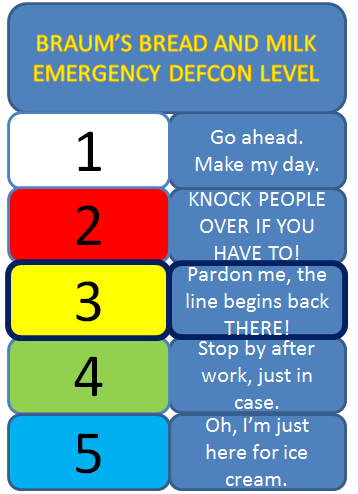

The DEFCON system was created after the North American Defense Command (NORAD) was established with Canada.Īt first, DEFCON indicated three readiness levels (normal, increased, maximum) and then added five more until the system was simplified into its five current levels. The Department of Defense introduced DEFCON as a military alert system in 1958, approximately a decade after the beginning of the Cold War. Historical Examples Of DEFCON Levels If the DEFCON Level were ever set to 1, nuclear war would be imminent. This level is considered the baseline of alert for the military during periods of no active or impeding conflict. It indicates “normal” or peacetime level of threat and response. The lowest state of readiness for the U.S. This typically means that there is an increase in gathering intelligence as well as tightening of security measures.ĭEFCON 4 is a common state of readiness among many military units and bases across the globe. DEFCON 4 – DOUBLE TAKEĭEFCON 4 indicates readiness that is above normal. Such response readiness would most likely apply to relevant and necessary security forces as opposed to the military as a whole. forces above what would be considered normal. This level means that there is an increase in the readiness of U.S. DEFCON 3 – ROUND HOUSEĭEFCON 3 indicates that select forces are ready to deploy where needed in 15 minutes. Armed Forces are ready to deploy and fight within six hours or less. This means that any necessary units of the U.S. DEFCON 2 – FAST PACEĭEFCON 2 level is considered the second most severe readiness condition in terms of the military’s response to threat.Īgain, this level is also related directly to the imminence of nuclear attack. This means that all necessary troops are mobilized and prepared to deploy and fight at a moment’s notice. DEFCON 1 – COCKED PISTOLĭEFCON 1 level is considered the most severe readiness condition in terms of threat and response.Īt this level, the military is at maximum readiness to immediately respond to threats or attacks, and those related to nuclear warfare in particular. Armed Forces or even individual units at the same time. It’s important to understand that DEFCON levels are not applied across all U.S. Joint Military Command and the Joint Chiefs of Staff indicate the DEFCON alert rate for the military as a means of establishing a specific level of required military readiness in response to potential attacks. This system is made up of five levels, ranging from DEFCON 5 as the lowest state of readiness and threat to DEFCON 1 as the maximum state of readiness and threat. DEFCON Levels Explainedĭefense Readiness Condition, or DEFCON, is a system utilized by the Armed Forces for identifying threat levels to the U.S.

is at DEFCON 3, meaning that certain units are in a state of preparedness for immediate response and deployment if necessary. In addition, this has created global backlash against Russian aggression, including imposed sanctions and other restrictions.Īs a result, the U.S. The circumstances brought about by Russian attacks in Ukraine has also led to tension between Russia and NATO. is currently reported to be at DEFCON 3 due to the situation and conflict between Russia and Ukraine.


 0 kommentar(er)
0 kommentar(er)
